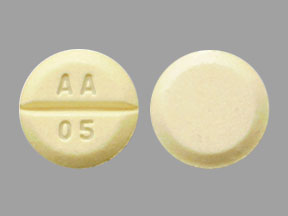Phytonadione Dosage
Medically reviewed by Drugs.com. Last updated on Oct 20, 2025.
Applies to the following strengths: 1 mg/0.5 mL; 10 mg/mL; 5 mg; 100 mcg; 1000 mcg; preservative-free 1 mg/0.5 mL
Usual Adult Dose for:
- Hypoprothrombinemia - Anticoagulant Induced
- Hypoprothrombinemia - Not Associated with Anticoagulant Therapy
Usual Pediatric Dose for:
- Hypoprothrombinemia - Prophylaxis
- Vitamin K Deficiency
- Hypoprothrombinemia - Not Associated with Anticoagulant Therapy
Additional dosage information:
Usual Adult Dose for Hypoprothrombinemia - Anticoagulant Induced
Initial dose: 2.5 to 10 mg, orally, subcutaneously, or IV
Maximum dose: Up to 25 mg (rarely up to 50 mg)
Comments:
- Give subcutaneously rather than IV whenever possible.
- If IV administration must be used, inject very slowly, not exceeding 1 mg/minute.
Use: Coumarin or indanedione anticoagulant-induced prothrombin deficiency
Usual Adult Dose for Hypoprothrombinemia - Not Associated with Anticoagulant Therapy
Initial dose: 2.5 to 25 mg or more, orally or subcutaneously (SC)
Maximum dose: Rarely up to 50 mg
Comments:
- Use concurrent bile salts if giving orally if obstructive jaundice or biliary fistula are present, otherwise vitamin K will not be absorbed.
Uses:
The following coagulation disorders when caused by deficiency or interference with vitamin K activity:
- Hypoprothrombinemia secondary to antibacterials or salicylates;
- Hypoprothrombinemia secondary to obstructive jaundice or biliary fistulas;
- Hypoprothrombinemia secondary to limited absorption or synthesis of vitamin K, e.g., sprue, ulcerative colitis, celiac disease, intestinal resection, cystic fibrosis of the pancreas, and regional enteritis
- Other drug-induced hypoprothrombinemia where it is definitely shown that the result is due to interference with vitamin K metabolism, e.g., salicylates
Usual Pediatric Dose for Hypoprothrombinemia - Prophylaxis
0.5 to 1 mg, IM, once, within one hour of birth
Use: Prophylaxis and therapy of hemorrhagic disease of the newborn when caused by deficiency or interference with vitamin K activity
Usual Pediatric Dose for Vitamin K Deficiency
0.5 to 1 mg, IM, once, within one hour of birth
Use: Prophylaxis and therapy of hemorrhagic disease of the newborn when caused by deficiency or interference with vitamin K activity
Usual Pediatric Dose for Hypoprothrombinemia - Not Associated with Anticoagulant Therapy
1 mg, subcutaneously or IM
Comments:
- Empiric vitamin K should not replace proper lab evaluation of the coagulation mechanism.
- A prompt response (prothrombin time shortened in 2 to 4 hours) is usually diagnostic of hemorrhagic disease of the newborn;
- Failure to respond indicates another diagnosis or coagulation disorder.
- Whole blood or component therapy may be needed for excessive bleeding, however vitamin K should still be given to correct the underlying disorder.
Use: Hemorrhagic disease of the newborn.
Renal Dose Adjustments
Data not available
Liver Dose Adjustments
Data not available
Dose Adjustments
ADULT:
Anticoagulant-Induced Hypoprothrombinemia:
- Frequency and amount of subsequent doses are determined by prothrombin time response or clinical condition.
- If administering orally, repeat dose in 12 to 48 hours if prothrombin time is not satisfactorily shortened.
- If administering parenterally, repeat dose in 6 to 8 hours if prothrombin time is not satisfactorily shortened.
Other Cause Hypoprothrombinemia:
- If possible, discontinue or reduce the dose of drugs interfering with coagulation (e.g. salicylates, antibiotics) as an alternative to phytonadione use.
- Use the severity of the coagulopathy to determine whether immediate phytonadione is required, in addition to discontinuing or reducing interfering drugs.
- The dosage amount and route depend on the severity of the condition and response obtained.
PEDIATRIC:
Other Cause Hypoprothrombinemia:
- A higher dose may be needed if the mother is on oral anticoagulants
ELDERLY:
- Use caution; generally start at the low end of the dosing range.
Precautions
US BOXED WARNING:
- HYPERSENSITIVITY REACTIONS WITH INTRAVENOUS AND INTRAMUSCULAR USE: Fatal hypersensitivity reactions, including anaphylaxis, have occurred during and immediately after intravenous and intramuscular injection of this drug. Reactions have occurred despite dilution to avoid rapid intravenous infusion and upon first dose. Avoid intravenous and intramuscular administration unless the subcutaneous route is not feasible and the serious risk is justified.
Safety and efficacy of the TABLET formulation has not been established in patients younger than 18 years.
Consult WARNINGS section for additional precautions.
Dialysis
Data not available
Other Comments
Administration advice:
- Avoid oral administration when the clinical disorder would prevent proper absorption.
- Give concurrent bile salts with the tablets if the endogenous bile supply is deficient.
- Give injectable phytonadione subcutaneously whenever possible.
- If IV administration is unavoidable, inject very slowly, not exceeding 1 mg/minute.
- If diluted for administration, use immediately.
Storage requirements:
- Protect from light
IV compatibility:
- Dilute only with 0.9% Sodium Chloride (NS), 5% Dextrose (D5W), or 5% Dextrose with Sodium Chloride.
- All diluents should be preservative free.
More about phytonadione
- Check interactions
- Compare alternatives
- Pricing & coupons
- Reviews (3)
- Drug images
- Side effects
- During pregnancy
- Drug class: anticoagulant reversal agents
- Breastfeeding
- En español
Patient resources
- Phytonadione oral/injection drug information
- Phytonadione (Injection) (Advanced Reading)
- Phytonadione (Oral) (Advanced Reading)
- Phytonadione Tablets
- Phytonadione Injection
Other brands
Professional resources
Other brands
Vitamin K1, Aquamephyton, Mephyton
Related treatment guides
See also:
Further information
Always consult your healthcare provider to ensure the information displayed on this page applies to your personal circumstances.


